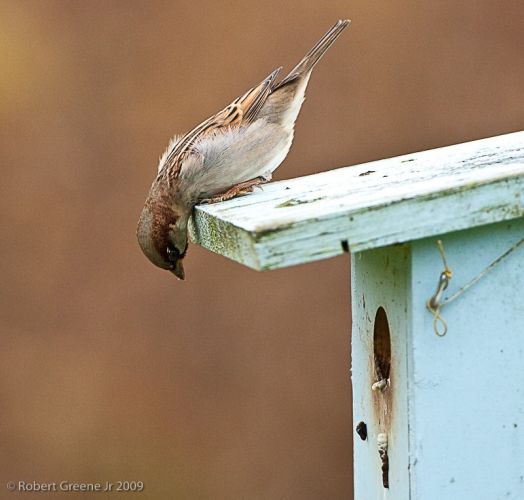
If you have bluebird nest boxes it’s mighty frustrating — and deadly to the bluebirds — when house sparrows take over.
Sometimes, hard as you try, you can’t eradicate the house sparrows, but this year you can put them to good use.
Cornell Lab of Ornithology is doing a study on variation in eggshell colors and your house sparrows can help. Here’s what to do, quoted from Cornell’s NestWatch eNewsletter:
“Because House Sparrows are a nonnative species, they are undesirable inhabitants of nest boxes in North America, but they are an easily accessible study species that can be used to address ecological questions without disturbing native birds.
“Researchers at the Cornell Lab of Ornithology are currently studying House Sparrows to help better understand the enormous variation in eggshell patterns and color. House Sparrow eggs exhibit an extraordinary amount of variation. Eggshell coloration and pattern may vary with available calcium, sunlight patterns, or habitat quality, and are expected to differ seasonally and geographically as well.
“You can help Cornell researchers gather information about the variation in House Sparrow eggs by submitting digital photographs of sparrow clutches so that the degree of speckling, spot size, and color tone of the eggs can be measured. Based on the variation that the researchers observe, they may find support for particular hypotheses about the underlying causes of eggshell color and patterning.
“To photograph eggs, please place them on a white piece of paper next to a coin for scale. Also, clearly write the date and location (town, state, zip code) on the paper next to the eggs before photographing, or include this information in the file name. Email digital photos to Dr. Caren Cooper (caren.cooper@cornell.edu).”
A Note from Kate: Don’t do this with any native bird eggs! Make sure you’re dealing with house sparrows before you begin!
(photo of a house sparrow eyeing a bluebird box, by Bobby Greene)